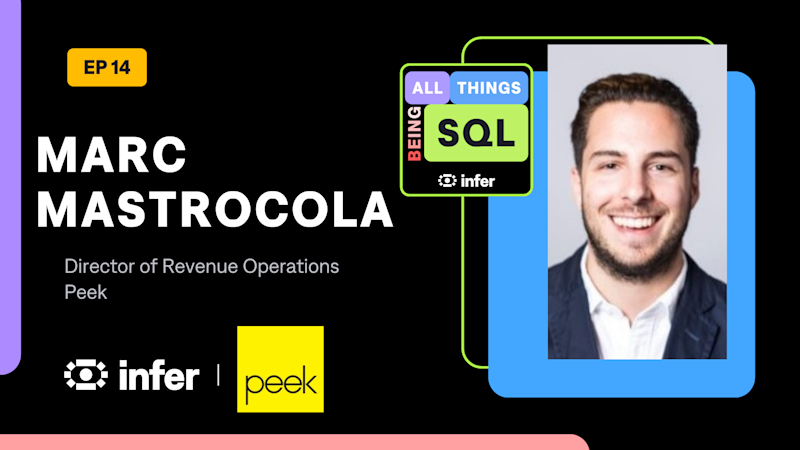Every sales team has heard of Lead Scoring. Prioritizing your leads using machine learning techniques isn’t new. But honestly, you need more than just a lead score to really make the most of your lead prioritization—especially when those lead scores are based on an arbitrary number out of 100.
We’ve implemented custom lead scoring solutions in sales teams ranging from cybersecurity to property, and everything in between. And what we’ve found is that you actually need these three things to make the most of your prospecting:
A probability that actually represents the real-life likelihood of winning the deal.
A percentile ranking, so you can say when a prospect is ‘in the top 5% of prospects.’
Top reasons behind each score, so you know why they’re worth your while.
In this article, we dig into the details of these three necessities to get your lead scoring into the best possible shape.
Why Traditional Lead Scores Suck
Have you ever felt like the lead scores you’re given seem to come out of nowhere? You’re not alone.
Traditional predictive lead scoring tools tend to use black-box methods that hide everything from the user (e.g., HubSpot), or the score itself is a black box (e.g., Madkudu, see below). Yes, you’re abstracting away the technical details. But this, I think, is a mistake.

What the hell does 87/100 mean? Is it ‘good’? How ‘good’? Top 1%? Why is it 87? Oh, nevermind…
Over time, this lack of clarity and transparency erodes the trust in the lead scoring itself. Or in some instances, it isn’t used at all because people don’t understand it or doubt its authenticity.
Let’s do better.
Real-life Probabilities That Actually Mean What You Think They Mean
Imagine if you could see the real chances of a lead turning into a customer. That’s exactly what probability offers—a clear, realistic metric that helps you understand and prioritize your leads. If it says 10%, you have an actual 10% chance of signing that customer. If it’s 50%, then it’s the same as flipping a coin.
If your organization is closing prospects at a rate of around 10%, then your probability of closing a deal for a prospect is probably somewhere between 1% (bad fit) up to 30% (great fit). It’s pretty much never 87%.

By using probability as a way to do lead scoring, you get a more accurate, meaningful estimate of how likely you are to convert prospects into customers.
But just using probability is not enough. You also need a way to rank your prospects in a way that is intuitive…
Ranking that Actually Makes Sense: Top 1%, Top 10%, and More
A percentile ranking places your lead in context, showing how it compares to all other leads.
When you see a percentile of 99% for your lead, you can quickly say ‘this is a top 1% prospect,’ or 90% is a ‘top 10% prospect.’
This means you can glance at your leads and immediately know which are your go-tos and which are maybe-laters.
Giving Actual Reasons for a Lead Score
A crucial element in lead scoring is trust. If you can’t trust it, then you won’t use it, and you’ll stick to your gut.
To build trust in the score, you need to understand where it came from. But you don’t really have the time to get a PhD in machine learning, so this should be made immediately obvious to you.
By giving the top 3 reasons for why a prediction was made, you can quickly assess how much you should trust it. If you have a top 1% lead score that says the top reason for converting is ‘Job Title: Astronaut’ when you’re selling B2B SaaS, you might want to rethink how much trust you give to your lead score.

If, however, it says ‘Job Title: VP Engineering’ and you’re selling cybersecurity software, then you might think this score is much better.

Over time, seeing repeated examples that ‘just make sense’ gives you the trust that you need to execute on the recommendations.
Why AI & ML is Actually Necessary for All This
AI & ML methods work very differently from humans. They’re amazing at scale—looking at hundreds of thousands of prospects, reading all of their company firmographics, the transcriptions of your sales calls, behavioral intent, and much more. And every day, there is more data and new trends.

Machines automate the complicated data work to find deep insights to create rankings at a scale that any sane person cannot do. Just get some rest while the data piles up, and let AI do the hard work for you.
Conclusion: Making Lead Scoring More Meaningful
Relying solely on traditional lead scores just isn’t good enough anymore. To build trust and maximize conversion rates, your lead scoring system needs to have:
Probability:
Represents the real-life chances of winning the deal.
Percentile Ranking:
Helps you quickly identify top prospects.
Top Reasons Behind Each Score:
Provides the transparency needed to trust and act on the scores.
By using these three things and leveraging the power, explainability, and scalability of machine learning, you can significantly improve your lead management, build trust within your teams, and drive greater sales success.
Ready to transform your lead scoring? Let’s talk about how these strategies can work for you.


